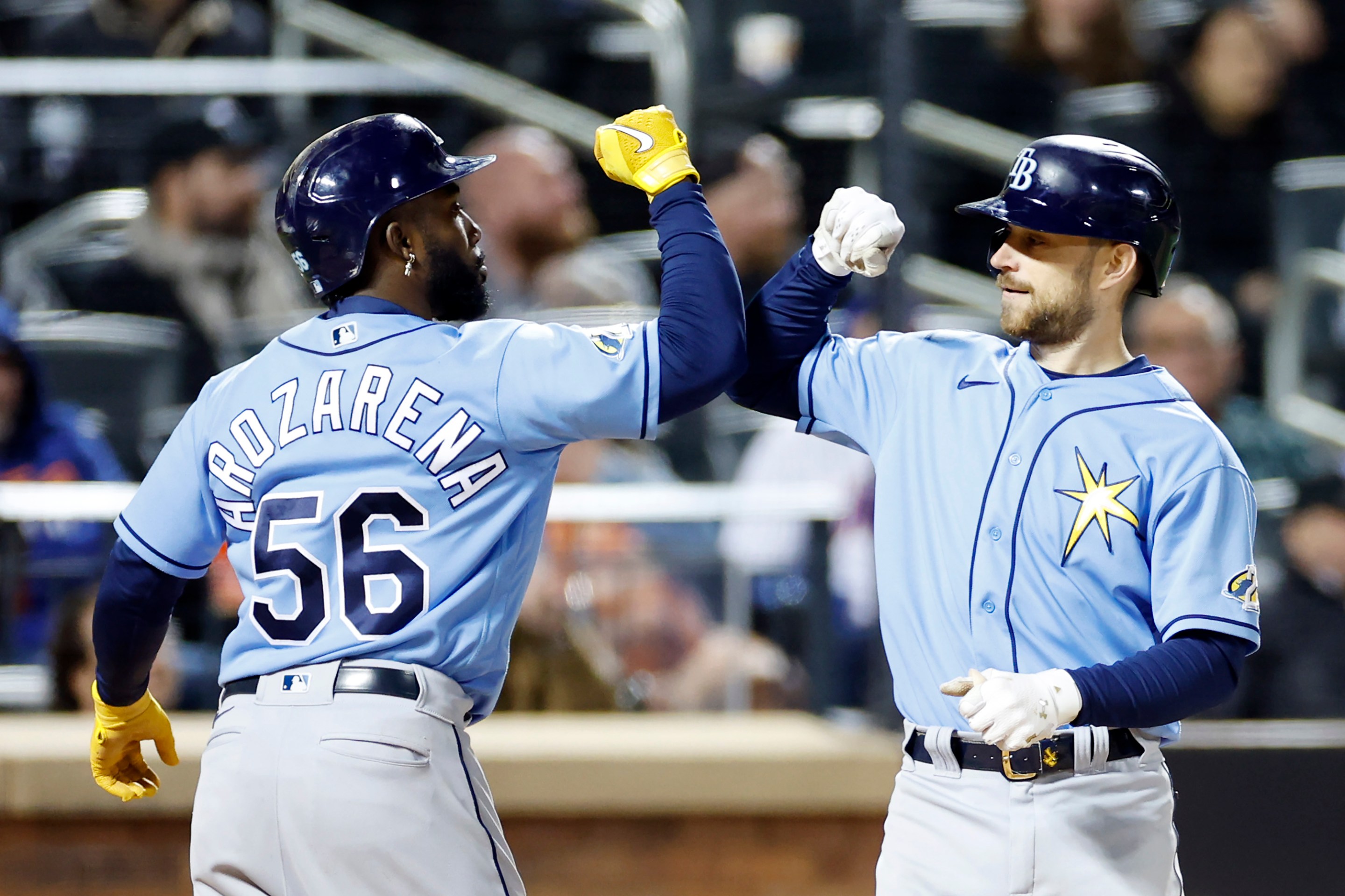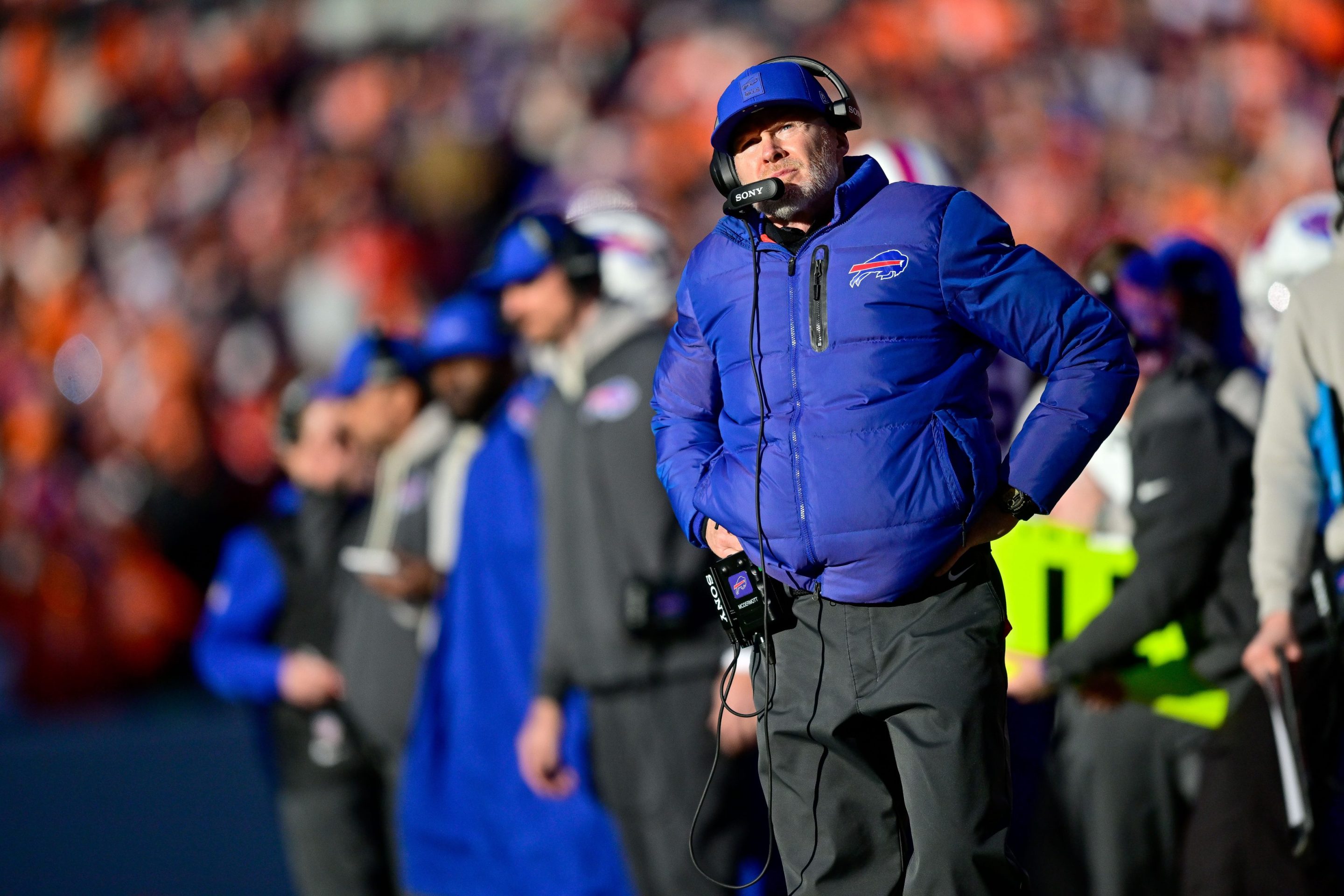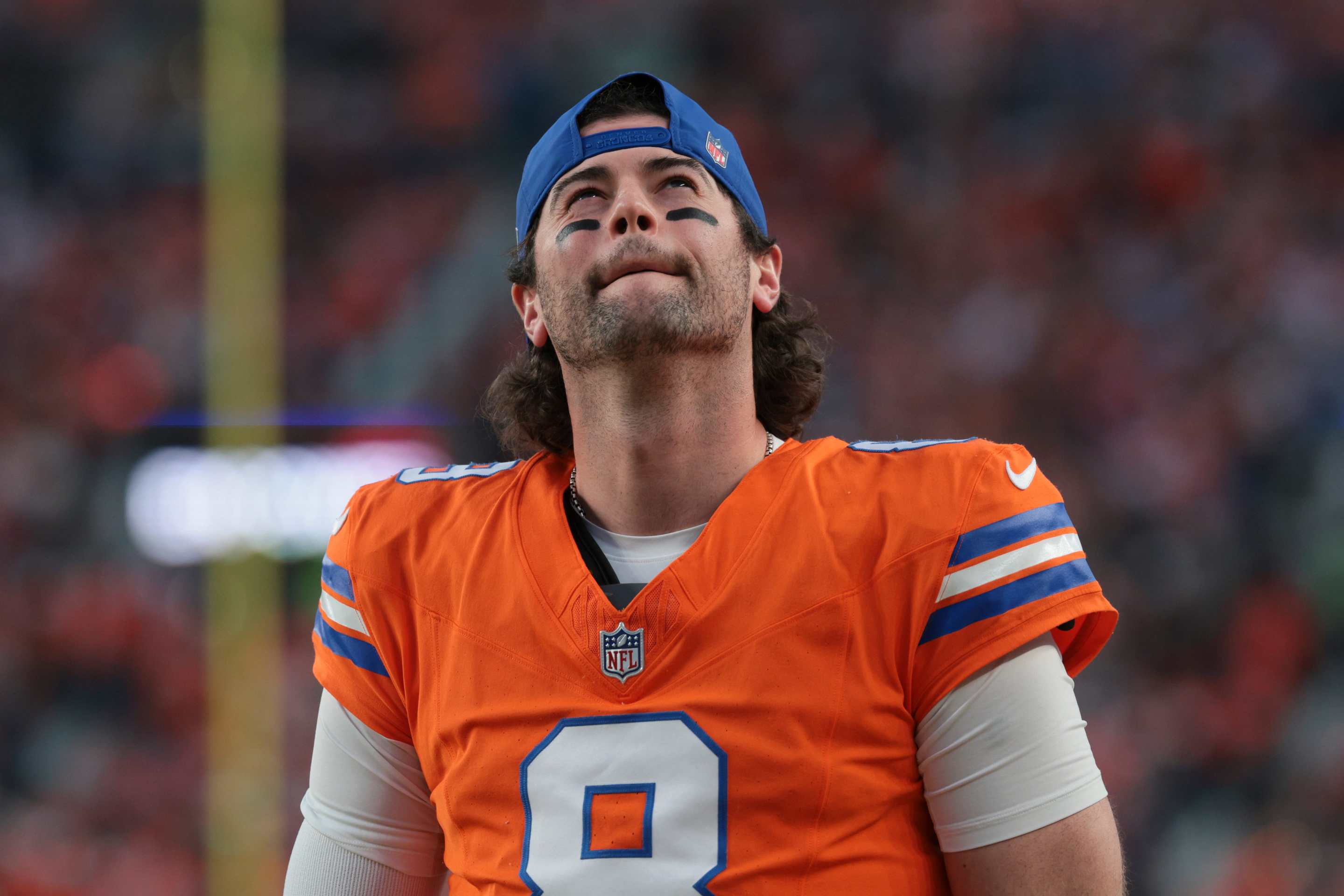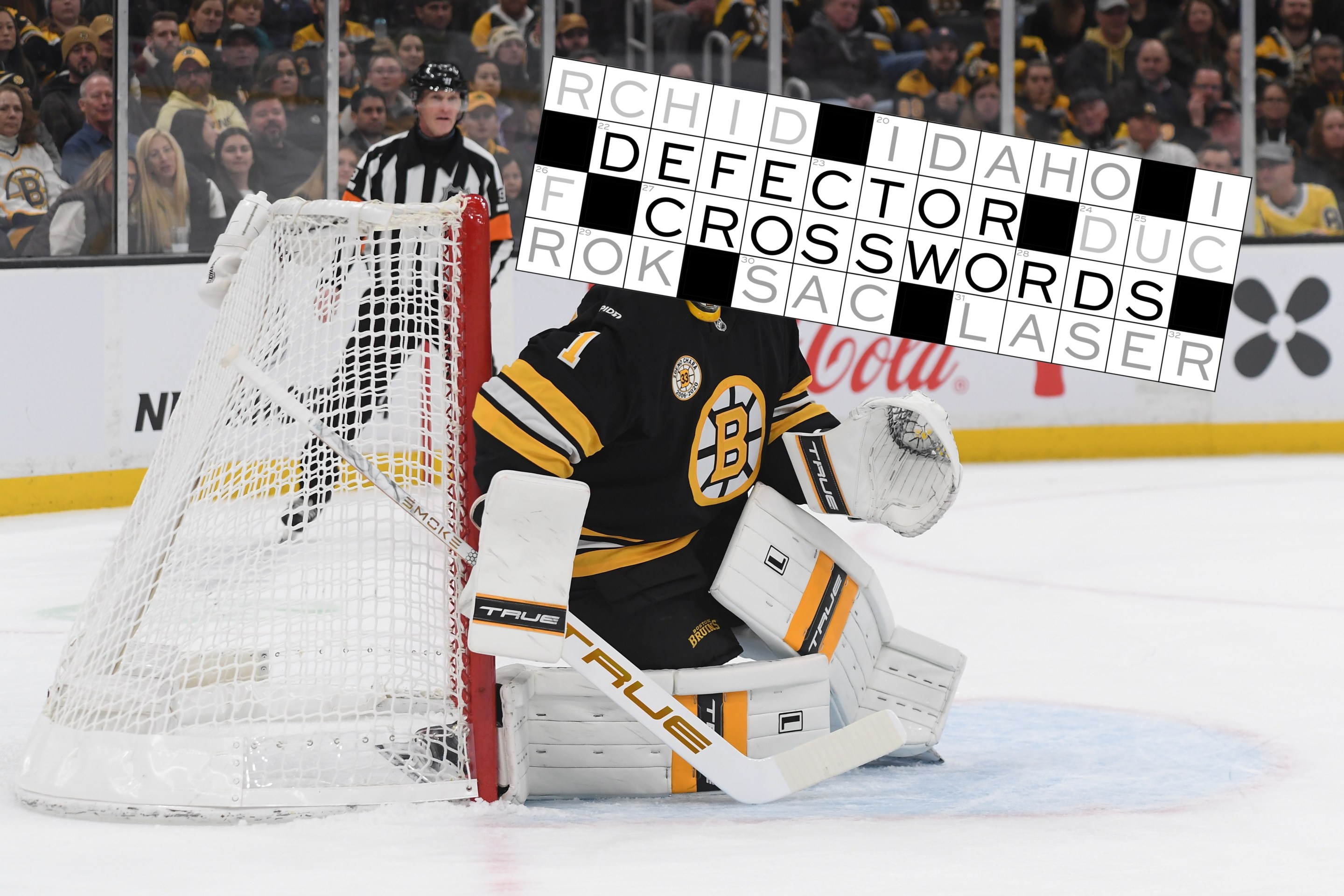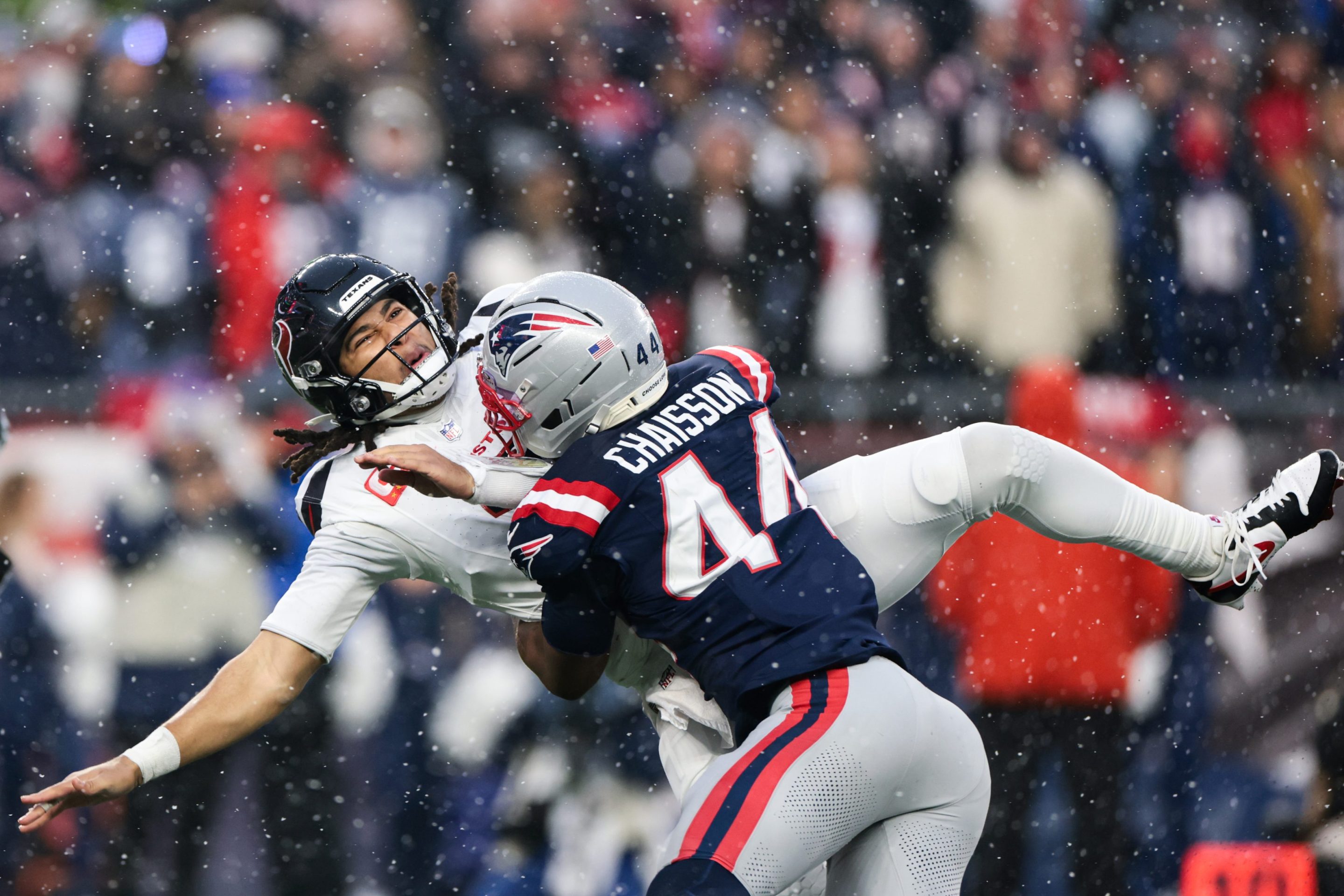Defector has partnered with Baseball Prospectus to bring you a taste of their work. They write good shit that we think you’ll like. If you do like it, we encourage you to check out their site and subscribe.
This story was originally published at Baseball Prospectus on May 16.
The 2022 Rays took a significant step back offensively from their 100-win team the year before, shedding 1.2 runs per game from 5.3 in 2021. Vowing to return to the level that made them one of the AL’s best teams, the Tampa braintrust took an unusual route towards addressing their bats’ stagnation: rather than making external additions, they chose to rely on internal gains by getting their hitters to improve their decision-making in games. From the Tampa Bay Times:
“I think the focus in spring is basically seeing the ball and controlling the zone,” manger [sic] Kevin Cash said. “So, swinging at better pitches—that’s a big focal point. But those two messages are how we get to it.”
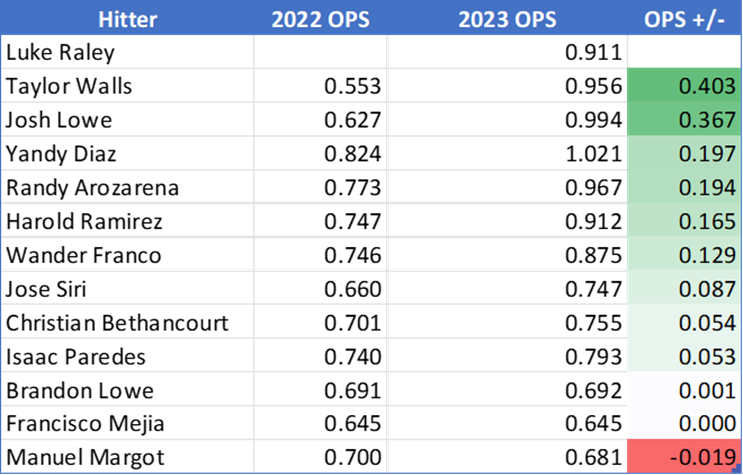
Mission accomplished?
Of course, if it was so simple surely more teams would be able to replicate the Rays’ success—but there aren’t any other teams that have a collective OPS of .856. The second place Braves don’t even have an OPS over .800, so the Rays are lapping the field here. Their secret sauce, if there is one, isn’t especially born out by the changes in their year-to-year underlying statistics at the dish, either:
| O-Swing% | Lg Rank | Z-Swing% | Lg Rank | |
| 2022 | 29.4% | 15th | 67.1% | 8th |
| 2023 | 28.8% | 19th | 67.1% | 4th |
Technically, they are swinging at marginally fewer balls while attacking exactly the same rate of pitches in the zone. That improvement hardly explains the 170 point jump in their team OPS from 2022 (from .686 to .856), even after factoring in the 20 point increase in offense for the league as a whole this season.
Instead, the change seems to go deeper than “swing at strikes and don’t swing at balls.” Rather, the Rays have achieved their success by addressing each of their players’ individual weaknesses and rolling those changes up into a greater-than-the-sum-of-their-parts effect. A useful demonstration of this can be found in the year-over-year versions of the Rays’ brightest young star, Wander Franco.
Before the season, I wrote that his superlative strikeout rate may have been a weakness; he wasn’t doing as much damage on contact as his talent suggested he was capable of, and instead was too focused on putting the ball in play. Flash forward six weeks into the season, and it appears Wander has made that exact tradeoff, sacrificing six points of strikeout suppression and re-allocating them to his barrel rate: a 1:1 trade of barrels for strikeouts that is a massive win for any hitter. One way in which he’s bumped up his power output is in improving his discipline when behind in the count. Look at Wander’s chase rate in pitcher counts (defined here as more strikes than balls, not including full counts):
| Wander Franco – Behind In The Count | |||
| O-Swing% | Median LA | Avg EV | |
| 2022 | 44.5 | 5 | 85.7 |
| 2023 | 31.3 | 10.5 | 91.5 |
Contact inside the zone is vastly more productive than outside of it, and Franco has made the subtle approach change of being less concerned with taking the occasional called strike three than he was last season. Targeting more pitches in the zone has led to a surge in his contact quality even while behind in the count, reflected in the huge jumps in his median launch angle and exit velocity. The on-field result of those gains? A .667 slugging percentage on contact after falling behind this year, compared to a .489 mark a year ago.
Whether it’s Wander being more selective on when to deploy his prodigious contact skills, Harold Ramirez embracing his identity as a hitter, or Yandy Diaz making subtle changes to finally access his elite raw power in games, everywhere you look up and down the roster, the Rays have seemingly unearthed the best versions of each of their hitters. Another notable example: Taylor Walls, he of the lifetime .569 OPS entering 2023.
In an effort to improve that paltry output, Walls made some dramatic changes in the spring, specifically focusing on how he handled elevated pitches and velocity. The breakdown, courtesy of Ben Whitelaw (a great twitter follow!):
Little breakdown of the new set-up for Taylor Walls at the plate 🧵⬇️ #RaysUp (1/4)
— Ben Whitelaw (@dogpancake73) March 16, 2023
The new setup is working, as he’s not only not struggling against high heat, but now targeting his former kryptonite. Walls is swinging at fastballs more than 44 percent of the time in hitter counts this year compared to 40 percent last season, and he’s doing far more damage when he does make contact. He’s already matched his season total of four home runs off heaters from last season in less than a third of the balls in play.
Walls’ evolution into an opportunistic hitter in favorable counts underscores a team-wide phenomena for the Rays: Once they get ahead, they mash. Choose your favorite quality of contact metric, wOBACON, SLGCON, or Damage Rate, and they all agree on one thing: The Rays demolish pitchers once they get ahead in the count:
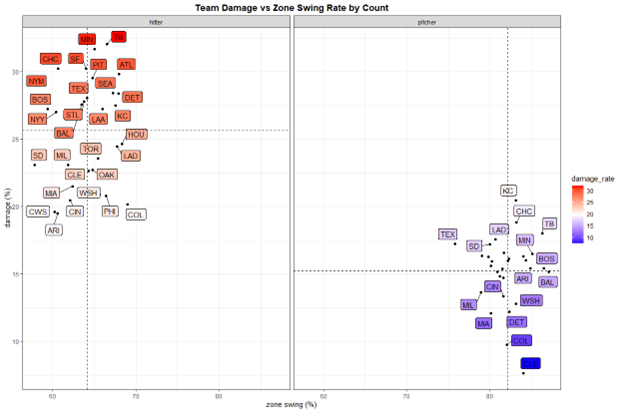
Their teamwide EV in these scenarios has shot up from 90.3 mph in 2022 to 92.9 mph in 2023. To put that in clearer terms: in 2022 they hit like Alec Bohm with an advantage in the count. In 2023, they’re hitting the ball like Yordan Alvarez when they’re up. Needless to say, that’s been a problem for opposing pitchers. To make matters worse for hurlers, no team has seen more pitches while ahead than the 2023 Rays; they only saw the 12th-most in 2022. So they’re getting their Voltron-version of “Yordan” to the plate more frequently than before, too.

Players like Walls and Ramirez improving by 10 percent adds up quickly when applied across nine spots in a lineup; it means the Rays essentially have no holes and transforms them into a meat grinder for opposing pitchers on a nightly basis. Add that depth to a team willing to shuffle names to better match up with opposing pitchers and a possible MVP candidate in Randy Arozarena, and you have the recipe for a roster with a collective slugging percentage over .500 and an on-base percentage of just under .350 over 1600+ trips to the plate.
It’s reminiscent in some ways to the 2021 San Francisco Giants, who also maximized every ounce of their potential by continually putting their players in positions to succeed. That formula may not be able to support this blistering pace over a 162-game season, but the Rays have already achieved what they set out to do this offseason: build a World Series-caliber lineup from within.
